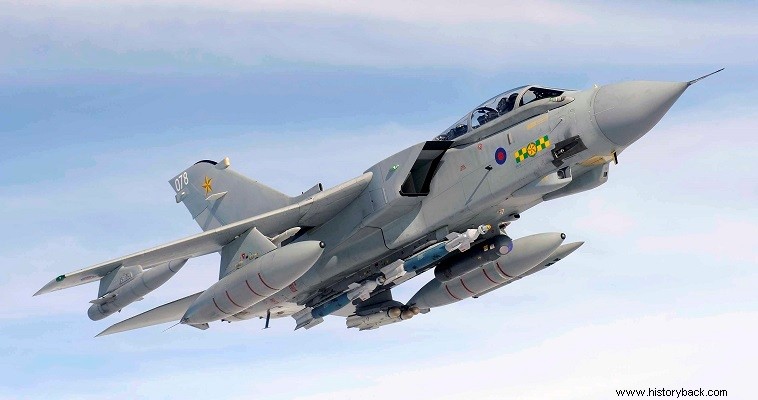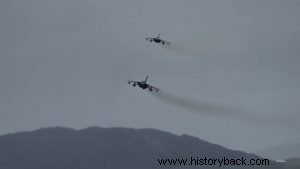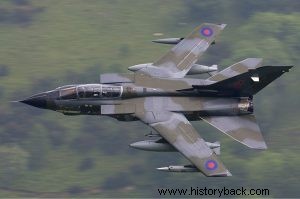
British Tornado fighter jets are being retired after 40 years in service. The Tornado entered service with the RAF in 1979 and for years formed its vanguard, participating in combat operations during the Gulf wars, against Saddam Hussein's Iraq, in operations in Kosovo, and more recently against the Islamic State jihadists.
And in the aviation of the other users of the type, however, the Tornado, of Germany and Italy, the aircraft are expected to be retired by 2025.
History
Tornado was a joint effort of Britain, West Germany and Italy. The prototype first flew in 1974 and the first production aircraft in 1979. The Tornado IDS (InterDictor/Strike) is a two-seat multi-role variable geometry fighter with an emphasis on strike missions.
It develops a maximum speed of 2.2 Mach, has an operational ceiling of 15,240 m and a radius of action with a weapon load of 3,690 kg of the order of 1,390 km. It carries two 27mm Mauser cannons and on seven suspension pylons it can carry a weapon load weighing up to 8,165 kg.
The ADV (Air Defense Variant) first flew in 1979 and the deliveries? launched in 1983. The ADV is faster (2.7 Mach max speed), carries a 27mm Mauser cannon and air-to-air missiles.
Operational action
The "Tonka", as the British pilots called it, first operated against Iraq in 1991 in the First Gulf War. About 60 GR1 fighters were deployed to bases in Bahrain and Saudi Arabia. These aircraft were accompanied by ADV.
aircraftInitially the GR1s hit Iraqi airfields with 1,000 pound bombs and JP233 airfield destruction systems. Six aircraft were lost in this conflict. After the war six British Tornados were deployed to Kuwait. In 1998, during Operation Desert Fox, the Tornadoes were back in action carrying out 36 strike missions, of which 28 were completely successful.
In 1999 British GR1s operated in Kosovo from bases in Germany and Corsica. Advanced GR4s participated in the Second Gulf War against Iraq using Storm Shadow cruise missiles as well. An aircraft was accidentally shot down by an American Patriot missile and the crew was killed. The crash was due to the lack of an IFF operating system. After the war aircraft remained in Iraq until 2009.
In 2009 Tornado GR4s were deployed in Afghanistan replacing the Harrier GR7 and 9. The Tornadoes used Paveway IV smart bombs. Tornadoes were withdrawn from Afghanistan in 2014 having flown over 5,000 sorties.
In 2011 they operated in Libya having as its headquarters the Akrotiri base in Cyprus. Since 2014 they have operated against the jihadists of the Islamic State again from the base of Akrotiri. In April 2018 they carried out a raid in Syria against the forces of the Assad regime . On 31 January 2019 RAF Tornadoes carried out their last raid against the Islamic State. The RAF veteran's final flight will be a ceremonial one and will take place on March 14.
Publications
The RAF used the following versions of the fighter:
Tornado GR1: It was the RAF's IDS. From GR1 came GRA1, GR1B, GR4 and GR4A. The first 228 entered service in 1980. Of these, 142 were upgraded to GR4 level by 2003.
Tornado GR1B: A total of 26 aircraft were upgraded to the GR1B version gaining the ability to attack ships with Sea Eagle missiles.
Tornado GR4: Upgraded version of the original GR1, with improved electronics and the ability to carry smart weapons.
Tornado GR1A/GR4A: Reconnaissance version used by RAF and Saudi Air Force. The RAF had 30 aircraft of this version. It has a TIRRS (Tornado Infra-Red Reconnaissance System).
Tornado ADV: Air Defense Variant in use with the RAF and the Saudi Air Force. It has more powerful engines, carries more fuel, has a higher rate of climb and a more powerful radar.


